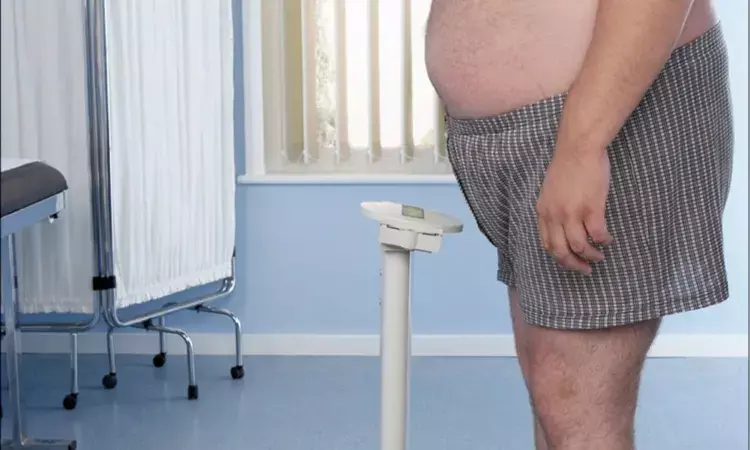- Home
- Medical news & Guidelines
- Anesthesiology
- Cardiology and CTVS
- Critical Care
- Dentistry
- Dermatology
- Diabetes and Endocrinology
- ENT
- Gastroenterology
- Medicine
- Nephrology
- Neurology
- Obstretics-Gynaecology
- Oncology
- Ophthalmology
- Orthopaedics
- Pediatrics-Neonatology
- Psychiatry
- Pulmonology
- Radiology
- Surgery
- Urology
- Laboratory Medicine
- Diet
- Nursing
- Paramedical
- Physiotherapy
- Health news
- Fact Check
- Bone Health Fact Check
- Brain Health Fact Check
- Cancer Related Fact Check
- Child Care Fact Check
- Dental and oral health fact check
- Diabetes and metabolic health fact check
- Diet and Nutrition Fact Check
- Eye and ENT Care Fact Check
- Fitness fact check
- Gut health fact check
- Heart health fact check
- Kidney health fact check
- Medical education fact check
- Men's health fact check
- Respiratory fact check
- Skin and hair care fact check
- Vaccine and Immunization fact check
- Women's health fact check
- AYUSH
- State News
- Andaman and Nicobar Islands
- Andhra Pradesh
- Arunachal Pradesh
- Assam
- Bihar
- Chandigarh
- Chattisgarh
- Dadra and Nagar Haveli
- Daman and Diu
- Delhi
- Goa
- Gujarat
- Haryana
- Himachal Pradesh
- Jammu & Kashmir
- Jharkhand
- Karnataka
- Kerala
- Ladakh
- Lakshadweep
- Madhya Pradesh
- Maharashtra
- Manipur
- Meghalaya
- Mizoram
- Nagaland
- Odisha
- Puducherry
- Punjab
- Rajasthan
- Sikkim
- Tamil Nadu
- Telangana
- Tripura
- Uttar Pradesh
- Uttrakhand
- West Bengal
- Medical Education
- Industry
Sarcopenic obesity tied to increased risk of CKD in type 2 diabetes patients: Study

South Korea: A recent study published in Obesity, a research journal, mentioned that sarcopenic obesity and not low muscle mass alone increases the risk of chronic kidney disease (CKD) in patients with type 2 diabetes mellitus (T2DM).
The association of Obesity, muscle impairment, and sarcopenic Obesity with CKD makes clinic prognosis worse. Sarcopenic Obesity changes body composition and is characterized by a decline in muscle mass, strength, and function.
According to a systemic review, sarcopenic Obesity confers 38 % greater risk of Type 2 Diabetes. Nearly 40 % of patients with diabetes (both diagnosed and undiagnosed) develop CKD. A study was conducted by Hea Seo et al. and the team from the Division of Endocrinology and Metabolism from the Department of Internal Medicine and the Department of Biomedical Sciences at Inha University of College of Medicine, Incheon, Republic of Korea conducted a study aimed at investigating the association between low muscle mass or sarcopenic Obesity and the risk of incident CKD in patients of T2DM.
The study included 3123 T2DM patients with preserved renal function. These patients were followed up for incident CKD. The diagnosis of sarcopenic Obesity was based on the concomitant presence of sarcopenia and abdominal Obesity. Based on bioelectrical impedance analysis, skeletal muscle mass was estimated. An estimated glomerular filtration rate< 60 mL/min/1.73 m2 defined CKD.
The key points of the study include:
- 530 patients, nearly 17 %, developed incident CKD.
- The follow-up period in the study was 8.9 years.
- An increased risk of incident CKD and lower muscle mass were not associated after adjustment for risk factors. The patients were divided into three groups based on sex-specific tertiles.
- Sarcopenic Obesity was linked to an increased risk of incident CKD with an adjusted hazard ratio of 1.77, a 95 % confidence interval with a p-value of 0.001. This finding was recorded when the patients were classified based on sarcopenia and Obesity and divided into four groups.
This study reported that sarcopenic Obesity is associated with an increased risk of incident CKD. However, future prospective studies are needed to better understand the natural course of CKD associated with longitudinal dynamic changes in skeletal muscle mass and waist circumference in patients with type 2 diabetes.
An Inha University Hospital Research Grant supported this original research.
References:
Seo, DH, Suh, YJ, Cho, Y, et al. Effect of low skeletal muscle mass and sarcopenic Obesity on chronic kidney disease in patients with type 2 diabetes. Obesity (Silver Spring). 2022; 1- 10.
Bellafronte NT, de Queirós Mattoso Ono A, Chiarello PG. Sarcopenic Obesity in Chronic Kidney Disease: Challenges in Diagnosis Using Different Diagnostic Criteria. Med Princ Pract. 2021;30(5):477-486. doi: 10.1159/000517597. Epub 2021 Jun 3. PMID: 34082433; PMCID: PMC8562051.
Davies M, Chatterjee S, Khunti K. The treatment of type 2 diabetes in the presence of renal impairment: what we should know about newer therapies. Clin Pharmacol. 2016;8:61-81
BDS, MDS in Periodontics and Implantology
Dr. Aditi Yadav is a BDS, MDS in Periodontics and Implantology. She has a clinical experience of 5 years as a laser dental surgeon. She also has a Diploma in clinical research and pharmacovigilance and is a Certified data scientist. She is currently working as a content developer in e-health services. Dr. Yadav has a keen interest in Medical Journalism and is actively involved in Medical Research writing.
Dr Kamal Kant Kohli-MBBS, DTCD- a chest specialist with more than 30 years of practice and a flair for writing clinical articles, Dr Kamal Kant Kohli joined Medical Dialogues as a Chief Editor of Medical News. Besides writing articles, as an editor, he proofreads and verifies all the medical content published on Medical Dialogues including those coming from journals, studies,medical conferences,guidelines etc. Email: drkohli@medicaldialogues.in. Contact no. 011-43720751


